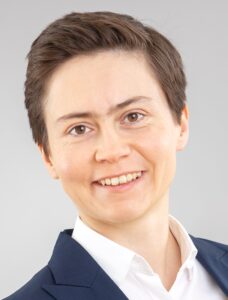Head of junior research group status at FAU

The FAU Head of junior research group (FAU-NGL) programme provides targeted support and visibility for excellent young researchers at FAU. Information on the programme and the requirements are listed on the website Head of junior research group status at FAU (FAU-NGL).
How the application process works at the faculty is shown on the TF Intranet under the tile “Procedures & Forms” / “FAU-NGL”.
2024 – Dr.-Ing. Patrick Schühle
Catalytic Systems for Chemical Energy Storage

In his junior research group, Dr. Patrick Schühle is developing new catalysts and technologies for chemical hydrogen production and storage. The BMBF junior research group FAIR-H2 has the goal of efficient decentralized production of hydrogen from biogenic, aqueous formic acid in sufficiently high purity for energetic use. To this end, new technologies for hydrogen production and purification are to be developed to market maturity. The so-called OxFA process is already capable of producing high yields of aqueous FA on a ton scale through the catalytic oxidation of wet biomass wastes (e.g. sewage sludge, industrial waste) under mild conditions. Biogenic hydrogen is bound in formic acid and can therefore be transported and stored in a safe and compact form. The on-demand release of hydrogen from aqueous formic acid is possible under very mild conditions and is therefore extremely energy-efficient. However, highly active and stable catalysts are required for this. For this reason, the FAIR-H2 project is developing and investigating solid catalysts in their operating environment. The focus here is on extremely robust metal phosphide catalysts, which are a core interest of the junior research group. With the help of these new catalysts, hydrogen production from biogenic formic acid is to be made possible using both a one-stage and a two-stage process. Dr. Schühle’s junior research group is also working on the use of dimethyl ether (DME) as a chemical hydrogen transport vector. By binding green hydrogen in DME, it can be transported economically and safely over long distances. At the destination, the hydrogen is released via catalytic steam reforming of the DME. New catalyst and reactor concepts for this reaction are being developed in the working group.
2023 – Dr.-Ing. Saskia Schimmel
New nitride materials for electronic components

Compared to established III nitrides, novel nitride semiconductors provide an extraordinarily wide range of additional physical properties (e.g. piezo-electric, ferro-electric, magnetic, superconducting). These materials are currently in the early stages of basic research and technological development. In contrast, some binary III nitrides such as GAN are already being used in commercial electronic devices. Research into new nitride materials and how to combine them with III nitrides could offer greater flexibility for electronic components based on GAN technology. Among these materials, the group’s research focuses on wide band-gap semiconductors, which hold significant potential for improving the energy efficiency of electronic components in energy conversion applications. Efficient conversion of electrical energy is and will continue to be an important topic in the future since the proportion of electrical energy in our total energy usage is increasing. This increase is due to the electrification of various processes both in industry and in the transport sector. Electrification is motivated by the necessity to reduce CO2 emissions. This group addresses the gap between fundamental research of the synthesis and the properties of new nitride materials and research into how they can be used in electronic components.
2021 – Dr.-Ing. Silvia Budday
Research topic: Brain Mechanics Across Scales (BRAINIACS)

Our research deals with the mechanics of the brain. While mechanical aspects have been neglected for a long time in brain research, according to the latest findings, they play an important role in brain function. An exciting example is the distinctively folded structure of the human brain, which is essential for higher cognitive functions. We propose that mechanical forces contribute to the folds in the human brain, which originally has a smooth surface. By combining experimental methods, modelling and simulation, we are developing computer models to help diagnose diseases and optimise treatment methods.